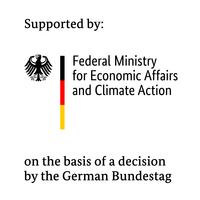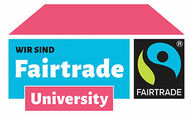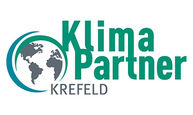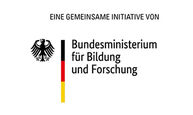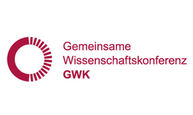Minimizing the environmental impact and waste during the production of such articles of clothing, along with improving function and extending the lifetime are goals that can be achieved through material and process development: by 3D printing thin membrane layers directly onto a textile, some areas that are exposed to higher wear during use can be reinforced, extending the product’s lifetime. Even a body mapping approach, where different materials are placed according to the sweat patterns of the wearer, is feasible. The tailored placement re- duces waste of the membrane material and the material complexity of cutting waste, while simultaneously minimizing the number of production steps.
Material:
Thermoplastic Polyurethane, Polyester
Technology:
3D Printing
Special quality:
The coating on the left side of the fabric is directly applied via 3D printing. A modified slit-nozzle allows fast and even application of the coating material. The sample shows the possibility of varying coating thickness within the same print. Currently, the modification of different print materials to achieve tunable water vapour permeability is being researched.
Contact:
E-Mail: alexandra.glogowsky(at)hs-niederrhein.de
Digital Print (right side):
E-Mail: franziska.jauch(at)web.de
Instagram @franziska_ jch
Acknowledgement:
IGF project 21723 N / 1 “Thermoresponsive Mikrogel-Membran” of the Research Association Forschungs- kuratorium Textil e. V., Reinhardtstraße 14-16, 10117 Berlin was funded via the AiF within the framework of the programme for the promotion of industrial joint research IGF by the Federal Ministry for Economic Affairs and Climate Action (BMWK) on the basis of a resolution of the German Bundestag.




